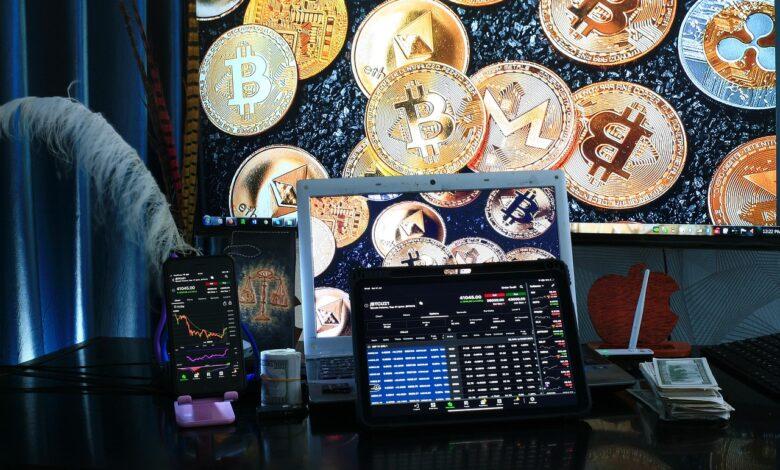Choosing a Crypto Exchange – Costs and Security

In the rapidly evolving landscape of cryptocurrency, the selection of an exchange transcends mere convenience; it demands a meticulous evaluation of several critical parameters. As individuals and institutions increasingly pivot towards digital assets, understanding the intricacies of these platforms becomes essential for ensuring both financial efficacy and security. This guide aims to dissect the key considerations that should inform your choice of a cryptocurrency exchange, focusing on two pivotal aspects: fees and security measures.
Examining the charges associated with an exchange is paramount. Fees can vary dramatically between platforms, influencing not only your initial investment but also your long-term profitability. Whether it’s trading fees, withdrawal charges, or hidden costs lurking in fine print, a comprehensive analysis of these factors is crucial. In an environment where margins can be razor-thin, understanding the full scope of costs involved will equip you to make informed decisions and optimize your trading strategy.
Equally significant is the aspect of security. The rise of cryptocurrency has unfortunately been accompanied by a surge in cyber threats. Evaluating the security measures employed by an exchange is not merely prudent; it is imperative for safeguarding your assets. From two-factor authentication to cold storage solutions, understanding the depth and breadth of an exchange’s protection mechanisms will empower you to assess their reliability and trustworthiness–key factors that cannot be overlooked in this digital age.
This article will serve as a comprehensive guide for assessing both fees and safety, providing insights into how to navigate the myriad options available in the crypto market. By analyzing these two fundamental dimensions, we aim to illuminate the path toward making well-informed choices in your cryptocurrency journey.
Understanding Crypto Exchange Fees: A Comprehensive Guide
In the ever-evolving landscape of cryptocurrency, exchanges serve as critical platforms for buying, selling, and trading various digital assets. However, when engaging in these transactions, one must consider the often-overlooked costs associated with these platforms. Fees can vary significantly between exchanges, encompassing trading fees, withdrawal fees, and deposit fees. These charges can accumulate quickly and affect an investor’s overall profitability. Therefore, evaluating the fee structures of different exchanges is essential for anyone looking to optimize their trading experience.
Analyzing fees involves more than just a cursory glance at the percentages associated with trades. It requires a deep dive into the various types of charges that may apply under different circumstances. For example, some exchanges offer “maker-taker” models that incentivize liquidity provision by offering lower fees for users who place orders that add liquidity to the market. Others may charge higher fees for certain cryptocurrencies or even impose additional costs for using specific payment methods. Understanding these intricacies is vital for making informed decisions about which platform to use.
Security is another paramount concern when it comes to cryptocurrency exchanges. The allure of digital assets often comes with inherent risks, particularly regarding the safety measures employed by these platforms. Evaluating security protocols should be an integral part of the decision-making process. Factors such as two-factor authentication (2FA), cold storage solutions for the majority of funds, and insurance policies against breaches are crucial elements to consider. A platform’s dedication to safeguarding user assets can serve as a key indicator of its reliability.
Safety measures are not static; they continue to evolve alongside technological advancements and emerging threats in the crypto space. It is essential for users to stay informed about an exchange’s history concerning security incidents and how effectively it has responded to any breaches. Transparency in communication regarding past hacks and ongoing security improvements can provide valuable insights into a platform’s commitment to user protection.
When assessing costs and safety, it is important to weigh both elements against your personal trading strategy and risk tolerance. For instance, a trader who frequently executes trades might prioritize lower fees over higher security measures if they are confident in their ability to manage risks. Conversely, an investor holding significant amounts of cryptocurrency may deem security as a priority, even if it means incurring higher fees on a platform known for its robust protective features.
Ultimately, evaluating charges and protection on crypto platforms requires a multifaceted approach. The interplay between fees and security necessitates careful consideration of individual needs and preferences. By thoroughly analyzing these factors and remaining vigilant about changes within the crypto ecosystem, investors can make informed choices that align with their financial goals while ensuring their assets remain secure in an increasingly complex digital world.
Types of Fees in Crypto Exchanges
In the vast and rapidly evolving landscape of cryptocurrency exchanges, understanding the various types of fees is crucial for any investor looking to optimize their trading experience. Fees can vary significantly across platforms, influencing not only the profitability of trades but also the overall safety and efficiency of transactions. Typically, exchanges impose several types of fees, including trading fees, withdrawal fees, deposit fees, and sometimes even inactivity fees. Each type warrants careful consideration, as they contribute to the total costs incurred when engaging with a particular exchange.
When assessing costs associated with crypto exchanges, it is essential to evaluate not just the nominal fee percentages but also the underlying structure that dictates those charges. For instance, some exchanges offer lower trading fees but may impose higher withdrawal costs, effectively negating any savings during the trading process. Additionally, understanding how fees scale with trading volume can provide further insights into potential expenses. Thus, investors must conduct a thorough analysis of fee structures to ensure they are not caught off guard by unexpected charges.
Safety remains a paramount concern for anyone entering the world of cryptocurrency. Key factors in evaluating the security measures implemented by an exchange include regulatory compliance, insurance coverage for digital assets, and the presence of robust cybersecurity protocols. A platform that prioritizes protection will often undergo regular security audits and employ advanced encryption technologies to safeguard user funds against potential breaches. Consequently, while assessing an exchange’s fees, it is equally vital to weigh these safety considerations to ensure a balanced approach toward investing.
In addition to direct financial implications, evaluating charges should also encompass how well an exchange manages risk. This involves scrutinizing its track record regarding hacks or data breaches and understanding how quickly and efficiently it responds to security incidents. A transparent exchange that openly communicates its security policies and incidents fosters trust among users and demonstrates a commitment to protecting their assets. Therefore, integrating safety assessments alongside fee evaluations is imperative for informed decision-making.
The interplay between costs and security measures creates a complex landscape where one cannot be overlooked in favor of the other. For instance, opting for an exchange with minimal fees but questionable security can lead to significant long-term losses if funds are compromised. Conversely, a more secure platform might charge slightly higher fees but ultimately provide peace of mind and protection that outweighs any initial cost savings. Hence, this guide emphasizes the necessity for investors to adopt a holistic view when analyzing crypto exchanges.
In conclusion, navigating the intricacies of cryptocurrency exchanges requires diligent evaluation of both fees and safety measures. By carefully considering all aspects–from types of charges to protective mechanisms–investors can make informed choices that align with their financial goals and risk tolerance. As the market continues to mature, staying vigilant about these key factors will empower traders to not only maximize their returns but also ensure their investments remain secure in an ever-changing digital landscape.
Assessing Security Measures and Evaluating Charges in Crypto Exchanges
In the ever-evolving landscape of cryptocurrency, assessing security measures is paramount for any investor or trader. A platform’s security features serve as the first line of defense against potential threats such as hacks or data breaches. Key considerations include the implementation of two-factor authentication (2FA), cold storage for the majority of funds, and regular security audits. For instance, exchanges that utilize multi-signature wallets add an additional layer of protection, ensuring that multiple keys are required to authorize transactions. Investors should scrutinize these factors meticulously, as a robust security framework can significantly mitigate risks associated with digital asset management.
When evaluating charges associated with crypto exchanges, one must take into account not only the transaction fees but also any hidden charges that may arise during trading. Many platforms advertise low fees but may obscure costs related to withdrawals, deposits, or currency conversion. Thus, a comprehensive analysis of the fee structure is essential. For example, some exchanges might charge a flat fee per trade while others operate on a percentage basis. Understanding these financial implications can help investors make informed decisions that align with their trading strategies.
Safety is intrinsically linked to both the security measures and the fee structure of a cryptocurrency exchange. An exchange with transparent fees and stringent security protocols is more likely to inspire confidence among its users. Additionally, platforms that are regulated in reputable jurisdictions often exhibit higher standards of operational safety. Investors should evaluate whether an exchange has been subject to regulatory scrutiny and what measures it has in place to protect user assets. This includes insurance policies that cover potential losses due to breaches or malfeasance, which can be a critical factor in determining a platform’s overall reliability.
In conclusion, analyzing fees and security measures are key factors in selecting a cryptocurrency exchange. By carefully assessing these elements, investors can better navigate the complex world of digital currencies while minimizing exposure to risk. A well-informed approach not only enhances the safety of one’s investments but also empowers individuals to engage confidently in the burgeoning crypto market. Therefore, whether one is a seasoned trader or a newcomer, understanding these fundamental aspects is essential for successful participation in cryptocurrencies.
Conclusion: Navigating the Complex Terrain of Crypto Exchanges
In the labyrinthine world of cryptocurrency exchanges, where innovation dances hand in hand with volatility, the dual imperatives of security and cost often vie for our attention. As we traverse this landscape, it becomes increasingly clear that discerning users must engage in a meticulous process of evaluation. The stakes are high; an ill-considered choice can lead not only to financial loss but also to a breach of trust. Thus, understanding the key security features and analyzing associated fees becomes paramount.
When assessing platforms, one must weave together various considerations–protection measures, costs, and the overall safety framework of the exchange. In this guide, we have outlined essential factors that form the bedrock of a secure trading experience. By prioritizing these elements, one can navigate through the myriad options available with greater confidence.
Key Takeaways for Evaluating Crypto Exchanges
- Security Features: Look for exchanges that implement robust security measures such as two-factor authentication (2FA), cold storage solutions, and regular security audits.
- Evaluating Fees: Understand the fee structure–transaction fees, deposit/withdrawal fees, and any hidden charges that may affect your trading strategy.
- Protection Measures: Assess the insurance policies in place that protect users’ assets in case of a breach or hack.
- Platform Reputation: Analyze user reviews and regulatory compliance to gauge the reliability and trustworthiness of an exchange.
- User Support: Ensure that responsive customer support is available to address any issues or concerns promptly.
In conclusion, evaluating the intricate balance between costs and safety in cryptocurrency exchanges requires diligence and informed decision-making. By meticulously analyzing these key factors, individuals can enhance their protection against potential pitfalls while navigating this dynamic arena. Embrace this journey with curiosity and caution; after all, in the world of crypto, knowledge is not just power–it is your shield against uncertainty.





